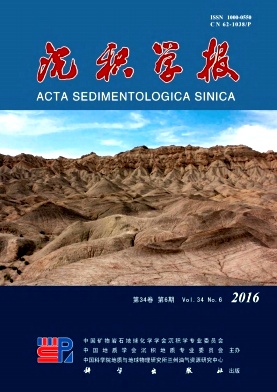Carbon Isotope Excursions Near the Middle-Late Ordovician Transition in the Yangtze Area and Their Possible Genesis
doi: 10.14027/j.cnki.cjxb.2016.06.002
- Received Date: 2016-05-13
- Rev Recd Date: 2016-08-11
- Publish Date: 2016-12-10
-
Key words:
- Yangtze area /
- Middle-Late Ordovician transition /
- carbon isotope excursions /
- MDICE /
- GICE /
- hydrothermal activities
Abstract: Two global positive carbon isotope excursions near the Middle to Late Ordovician transition-the Middle Darriwilian Inorganic Carbon Excursion(MDICE)and the Guttenberg Inorganic Carbon Excursion(GICE)——have been documented approximately in parallel with the major pulses of Great Ordovician Biodiversification Events(GOBE), great global sea level rises, geomagnetic reversals and significant variations of strontium, oxygen, sulfur isotopes in the ocean, indicating a possible causal link. Here, we reported the MDICE and GICE at Chenjiahe section in Yangtze area and compared them with their equivalents in Tarim Basin. Both the MDICE and GICE are found at the same stratigraphic level of rapid decrease of oceanic strontium isotope ratios in Yangtze Block and Tarim Basin, suggesting that the two carbon isotope excursions may be related to the enhanced hydrothermal activities at the middle ocean ridges, which could have increased releasing of essential nutrient elements such as iron into the seawater; this may have stimulated the biological blooms and increased oceanic primary productivity and organic burial, further inducing the positive carbon isotope excursions, i.e., the MDICE and GICE.
| Citation: | ZHAO PingPing, JIANG MaoSheng, LI RenWei. Carbon Isotope Excursions Near the Middle-Late Ordovician Transition in the Yangtze Area and Their Possible Genesis[J]. Acta Sedimentologica Sinica, 2016, 34(6): 1021-1031. doi: 10.14027/j.cnki.cjxb.2016.06.002 |






 DownLoad:
DownLoad: